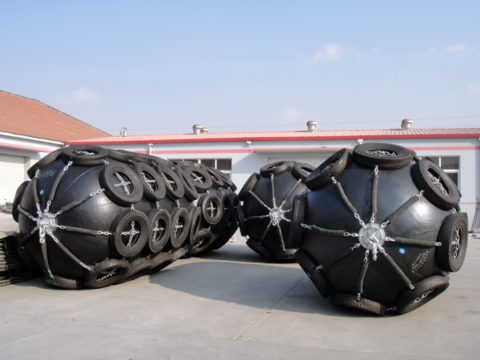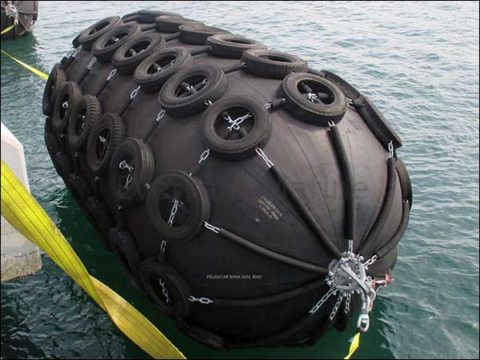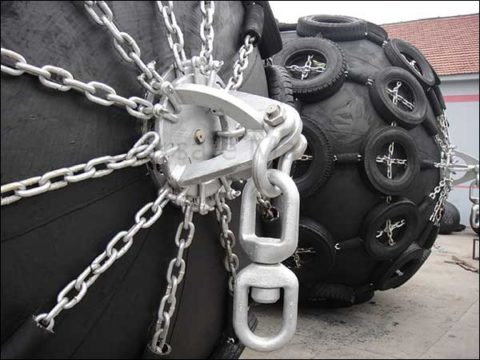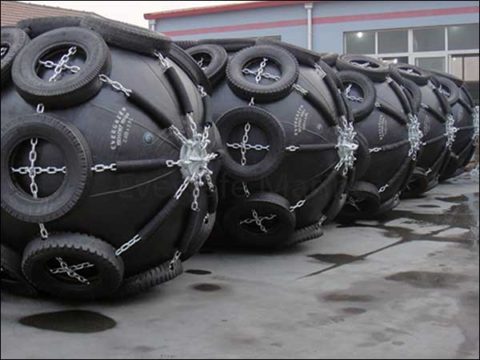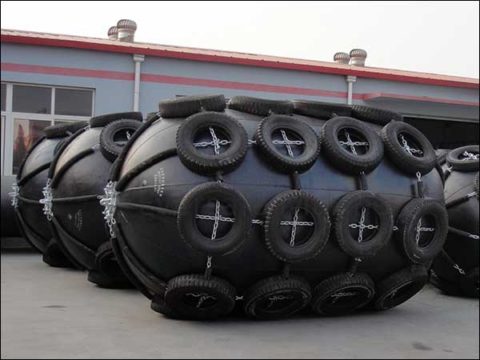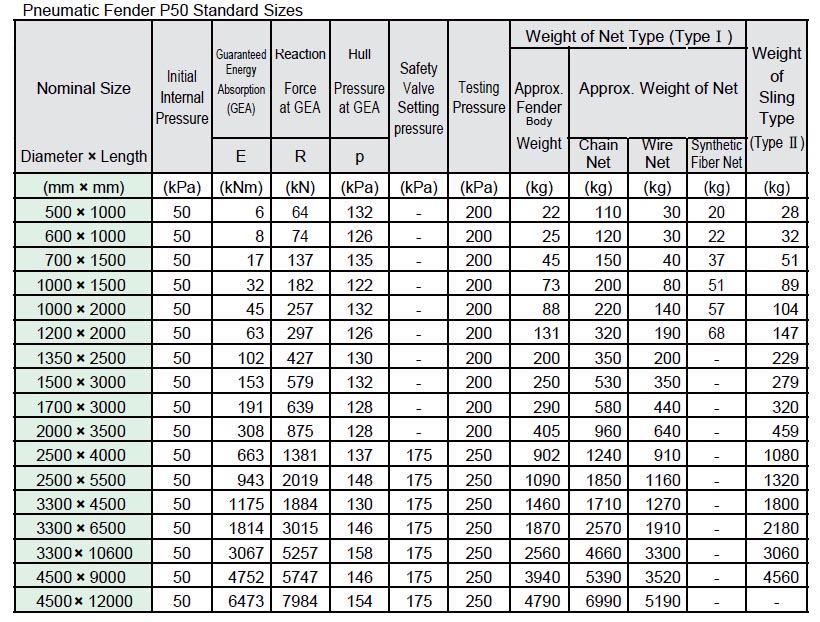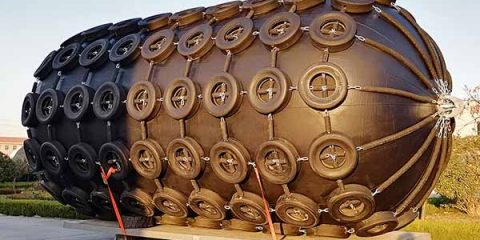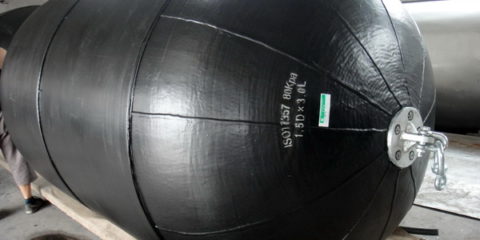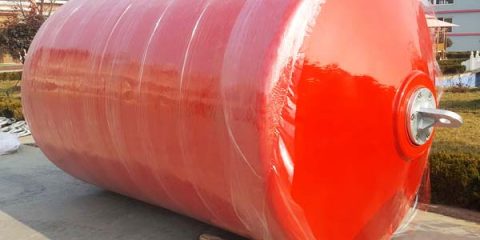
Pneumatic fender is a leading anti-collision device for marine application in the world today. This fender is made of synthetic-cord-reinforced rubber sheet with compressed air inside to enable it to float on the water and work as a protective medium. Therefore, pneumatic rubber fenders serves as a critical protective medium against collision when ship-to-ship (STS) transfer operations and ship-to-dock (STD) berthing and mooring operations.
Pneumatic fenders have the advantages of massive energy absorption with low unit surface pressure acted upon the ship. So pneumatic fender has become an ideal ship protection medium used extensively by large tankers, LPG vessels, ocean platforms, bulk carriers and floating structures, large docks, harbor and wharfs.
Advantages
- Compliance with ISO 17357-1: 2014
- Low Reaction Force and Hull Pressure
- More Safety and Reliability
- Most Cost Competitive System
- Lower Mooring Forces
- Advantage against Shearing Force
- Adaptable to the Tide
- Simple and Low Cost Installation
- Low Maintenance Cost
- Various Optional Fitting
Classification
According to initial internal pressure
- Pneumatic P50 (Initial internal pressure 50 kPa)
- Pneumatic P80 (Initial internal pressure 80 kPa)
According to shackle net
- Type I – Net-type Fenders. The fender is covered by a protection net consisting of either chain, wire or fiber and usually with tires or rubber sleeves.
- Type II – Sling type. The fender is designed to be used without a protection net. Easy to hand because of their lightweight.
Construction Features
Floating pneumatic rubber fenders, whose basic body construction consists of outer rubber layers, synthetic-cord-reinforced rubber layers and inner rubber layers, are kind of cylindrical air bags with hemispherical heads at both ends.
- Out Rubber
The outer rubber layer that covers the outside of fender protects the cord layers and the inner rubber from abrasion and other external forces. This compound has sufficient tensile and tear strength to withstand any weather condition and hard usage. Standard color is black, but other colors such as grey and creamy white are available on request.
- Inner Rubber
The liner of a rubber membrane seals the pressurized air insider the fenders.
- Synthetic-tire-cord layer for reinforcement
The reinforcement cord layers, which are made of Synthetic-tire-cord commonly used in tires, are arranged at ideal angles to hold the internal pressure and to distribute the stress evenly providing strong efficient reinforcement.
Synthetic-tire-cord layers, commonly used in tires, have been proven to provide strong efficient reinforcement layers in fenders; each single layer is coated with rubber compound on both sides as well as in between synthetic-tire-cord threads, hence isolating all cords from each other.
As contact between synthetic-tire-cord threads does not occur, synthetic tire cord has the advantage over other reinforcement materials such as canvas fabric of reducing friction and wears between cord threads during compression, bending and stretching, and also greatly improves fatigue resistance, endurance life, and pressure-holding performance.
Available sizes and performance
Other sizes non stantand but popular are available upon request.
